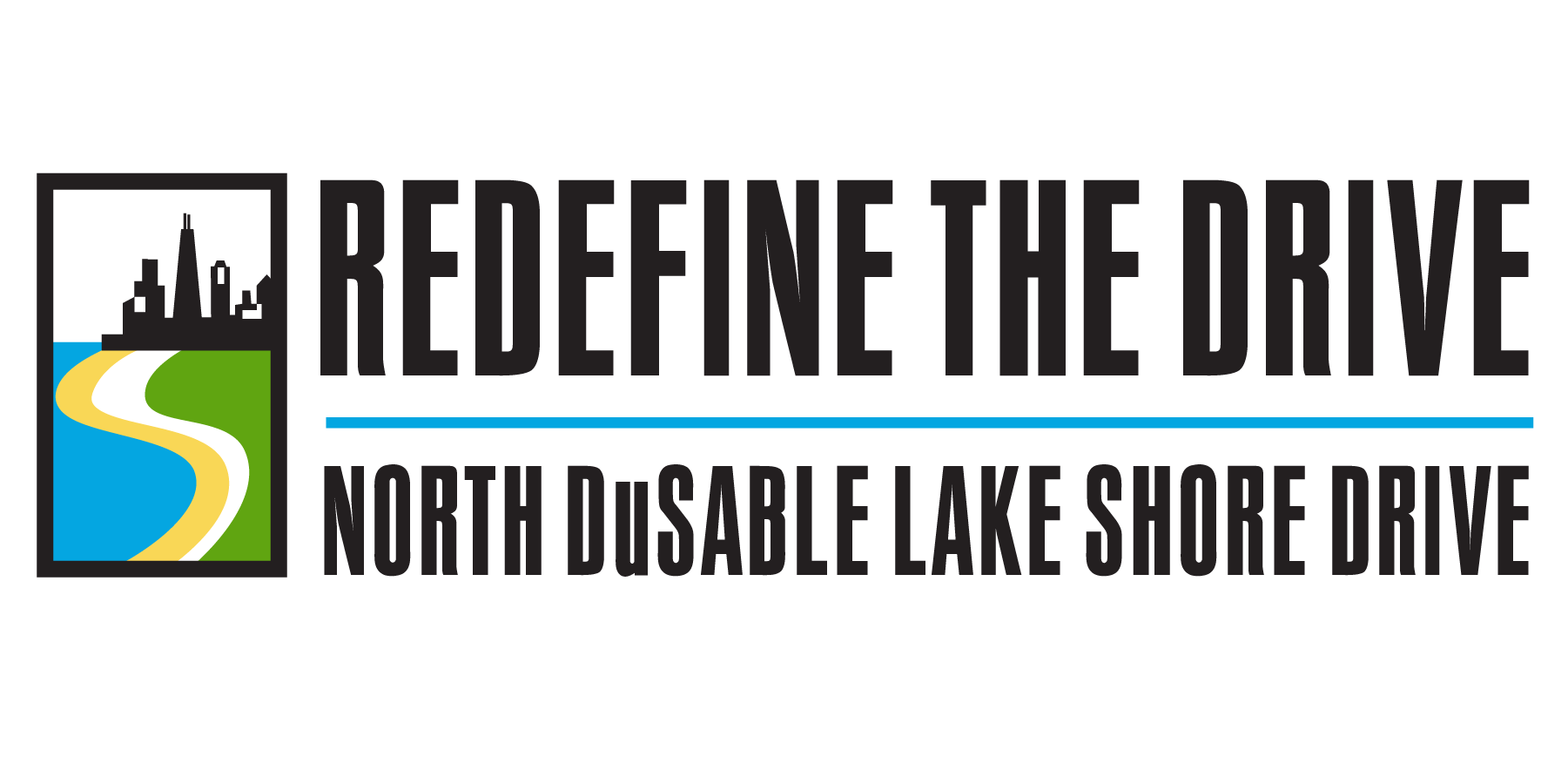Glossary
and Acronyms
Please note that all definitions provided on this page are in context to the North DuSable Lake Shore Drive Phase I Study. The following terms may have different applications in other transportation and infrastructure projects.
A—C
AASHTO – American Association of State Highway and Transportation Officials
Accessible Pedestrian Signal (APS) – A traffic signal that provides auditory and/or vibrotactile information to pedestrians who are blind or have low vision.
ADA – Americans with Disabilities Act
Adjacent Street Network – The local street grid to the west of North DuSable Lake Shore Drive.
ADT – Average Daily Traffic
AHCP – Advisory Council on Historic Preservation
Alternatives to be Carried Forward (ATBCF) – The NDLSD Alternatives that remain at the end of Level 2 Screening, which was the second round of evaluation. The ATBCF are evaluated in greater detail during Level 3 Screening.
APS – Accessible Pedestrian Signal
Arterial – Moderate to high capacity streets that connect commercial and residential areas.
ASC – Adaptive Signal Control
At Grade – On the same level as the adjacent park space.
ATA – (ActiveTrans) Active Transportation Alliance
Average Daily Traffic (ADT) – The calculation of average traffic volumes in both directions of travel in a time period greater than one day and less than one year and divided by the number of days in that time period.
Backshore Berm – A raised landscaped area along the eastern edge the Outer Drive, which is designed to prevent wave overtopping. A backshore berm is one component of the overall NDLSD shoreline protection strategy.
BDE – (IDOT) Bureau of Design and Environment
Below Grade – Below the level of the adjacent park space.
Best Management Practices (BMP) – Best management practices (BMPs) are used to manage roadway runoff and improve water quality. Examples of BMP’s include bioswales and bioretention ponds, which can store and filter roadway runoff.
BLRS – (IDOT District 1) Bureau of Local Roads and Streets
BMP – Best Management Practices
BRT – Bus-Rapid Transit
Bus Layovers – Provides a staging area for buses prior to beginning their routes.
Bus Priority Signal – Traffic signals at junctions that can be actuated by buses to bring up the green phase, which provides mobility advantage for transit. Bus Priority Signals are used in combination with Queue Jump Lanes.
Bus Turnarounds – Provides a dedicated turnaround space for buses (e.g., after buses reach the eastern end of their route, they can turn to head west).
CACC – Chicago Area Clean Cities Coalition
CAF – Chicago Architecture Foundation
Capacity Analysis – A study done to determine the quality of operation of a given intersection or roadway segment. The quality of operation is expressed in terms of a Level of Service (LOS).
CAPS – Chicago Alternative Policing Strategy
Categorical Exclusion (CE) – A category of actions which do not individually or cumulatively have a significant effect on the human environment.
CCA – Civic Consulting Alliance
CCAP – Chicago Climate Action Plan
CCDOTH – Cook County Department of Transportation and Highways
CCT – Chicago Community Trust
CDOT – Chicago Department of Transportation
CDPH – Chicago Department of Public Health
CDR – Combined Design Report
CE – Categorical Exclusion
CEQ – Council on Environmental Quality
CERCLIS – Comprehensive Environmental Response, Compensation, & Liability Information System CFR – Code of Federal Regulations
Chicago Metropolitan Agency for Planning (CMAP) – The Chicago Metropolitan Agency for Planning (CMAP) is the regional planning agency for northeastern Illinois (Cook, DuPage, Kane, Kendall, Lake, McHenry, and Will Counties). CMAP is providing year 2050 travel forecasts that are being used by the NDLSD project team.
CMAQ – Congestion Mitigation and Air Quality Improvement Program
CNT – Center for Neighborhood Technology
CNU – Congress for the New Urbanism
Collector – Low to moderate capacity streets that carry traffic from the interior of an area or community to the arterial system.
Complete Streets – Complete streets policy ensures that streets are designed, operated and maintained to be safe, comfortable and convenient for all users.
Context Sensitive Solutions (CSS) – Context sensitive solutions (CSS) is a collaborative, interdisciplinary approach that involves all stakeholders to develop a transportation facility that fits its physical setting and preserves scenic, aesthetic, historic, and environmental resources, while maintaining safety and mobility.
Context Tailored Treatments with Transit Advantages Alternatives (CTT + TA) – Options which bring NDLSD to modern standards and include spot transit improvements (Transit Advantage features). The top performing CTT Alternative has been carried forward to serve as both a standalone alternative (The Essential) as well as the base for all other alternatives.
Cooperating Agencies – Agencies which have jurisdiction by law or special expertise with respect to environmental impacts associated with the NDLSD Alternatives.
CPC – Corridor Planning Committee
CPD – Chicago Park District
CPS – Chicago Public Schools
CSS – Context Sensitive Solutions
CTA – Chicago Transit Authority
